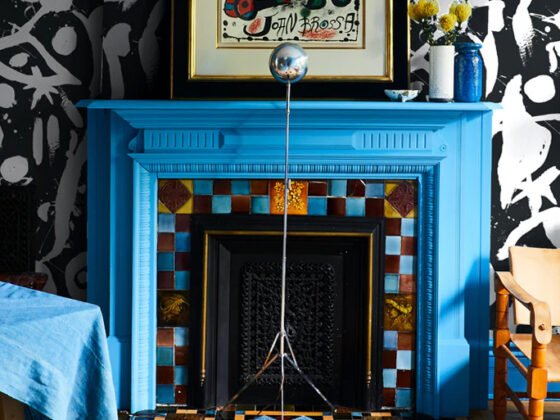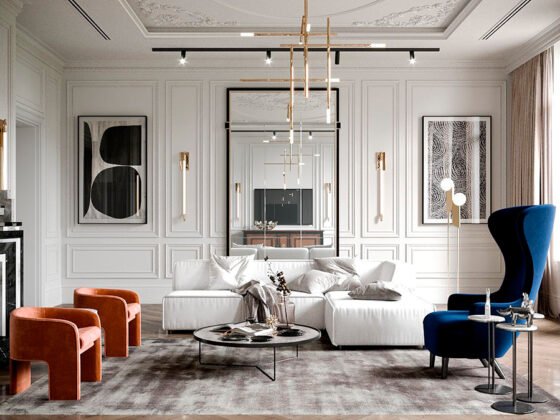In a world marked by sleek modernism and contemporary minimalism, rustic interior design stands as a charming and enduring tribute to a simpler, more down-to-earth way of living. Rooted in the rugged beauty of nature and a desire for warmth and authenticity, this style captivates us with its timeless appeal. Rustic design effortlessly blends the old and new, the raw and refined, to create spaces that exude comfort, character, and a touch of nostalgia.
Characteristics of Rustic Interior Design
Countryside interiors, shaped by centuries of rural living, have taken on various forms across the globe. They evolved naturally from the daily lives of rural communities, their agricultural traditions, the materials readily available, and the craftsmanship of the people. As time went on, urban people, weary of the hustle and bustle of city life, found solace in the simplicity and serenity of the countryside, drawn to its rustic charm with warmth and coziness.
Each culture has its own unique interpretation of rustic style, heavily influenced by local traditions, the materials at hand, and the elements used in home decor. Among the most prevalent worldwide are the Provencal, English, Tuscan, and American country styles of interiors.

In general rustic interior design is defined by its unique and distinctive characteristics, all of which pay homage to the beauty of the natural world and simpler times. Here are some key features:
- Natural Materials: Rustic interiors showcase the beauty of raw, natural materials. Wood, stone, and exposed brick are prominently featured. Wooden beams, reclaimed wood floors, and weathered stone accents create a warm and inviting atmosphere. The characteristic feature is the preservation of the rough and textured surfaces. This style eschews materials such as plastic, chrome, shiny metals, and synthetics. Among the most suitable options for textiles are ones crafted from cotton, linen, and hemp fibres. Also wool and burlap are used for upholstery, rugs. These fabrics not only provide a tactile and organic quality but are often adorned with simple, vintage-inspired patterns such as checks, florals, and other subtle designs, adding to the overall charm of the space.
- Earthy Color Palette: The color scheme is inspired by the natural world, consisting of warm earth tones. Earthy browns, muted greens, deep reds, and warm yellows are often used, creating a cozy and inviting ambiance.
- Antique and Vintage Furniture: The inclusion of vintage or antique furniture pieces adds character and history to rustic interiors. These items may be handcrafted, heirloom pieces, or charming flea market finds. Rustic decor thrives on the art of curating an eclectic mix of items, seemingly gathered at random yet each possessing a distinct function and purpose within a room. Consider the appeal of mismatched dining chairs encircling a well-loved dining table, for instance – a charming aesthetic to embrace. In the quest for a beautifully realized and welcoming space, the objective is to make your furnishings appear as though they’ve been gathered gradually over time. Embrace unconventional ideas, like crafting a side table from a stack of vintage books or transforming an old trunk into a central coffee table that becomes a standout feature in any room. By anchoring your room layout around a focal point, whether it’s a fireplace, TV, or coffee table, you infuse the space with a sense of purpose and cohesiveness, uniting all the elements.
- Open Spaces: Rustic design often favors open and spacious layouts, emphasizing the flow and connection between different areas of a home. High ceilings and open kitchens are common features.
- Natural Light: Large windows and doors maximize natural light, allowing the beauty of the outdoors to become a part of the interior decor.

Key Elements of Rustic Interior Design
- Wood Everywhere: Wood is the cornerstone of rustic interior design. Exposed wooden beams, wooden floors, and wooden furniture pieces with natural or distressed finishes create a warm, inviting atmosphere. Note, that in the world of rustic home decor, natural materials don’t always adhere to strict conformity; instead, relish in the inherent organic imperfections they bring to your design approach.
- Stone and Brick: Incorporating stone or brick elements, such as a stone fireplace or exposed brick walls, adds texture and a rugged, natural feel to the space.
- Fireplace Focal Point: A fireplace, often made of stone or featuring a wooden mantel, serves as the heart of many rustic interiors, providing warmth and a sense of comfort. Don’t have a fireplace or the option to install one? A great tip for creating that warm fiery glow is to use soft yellow/orange lighting around your room; it elicits the same inviting feel at a fraction of the price.
- Cozy Furnishings: Plush, comfortable furniture with soft, earth-toned upholstery, throw blankets, and cozy pillows invites relaxation and comfort.
- Rustic Lighting: Unique light fixtures made of iron, metal, or wood, often with vintage or industrial designs, enhance the rustic charm of the space.
- Vintage Accessories: Decorative items like vintage signs, mason jars, and antique tools add character and a sense of history to the decor.

Rustic interior design is a celebration of nature, simplicity, and the enduring appeal of the past, bringing the rugged beauty of the outdoors inside to create charming and comfortable spaces. Whether you live in a cozy cottage, a suburban home, or a city apartment, rustic design offers a warm and welcoming aesthetic that can be adapted to any space. If you’re seeking to infuse your home with timeless charm and a lasting connection to the natural world, consider embracing the rustic interior design style for a living space that exudes warmth and authenticity.


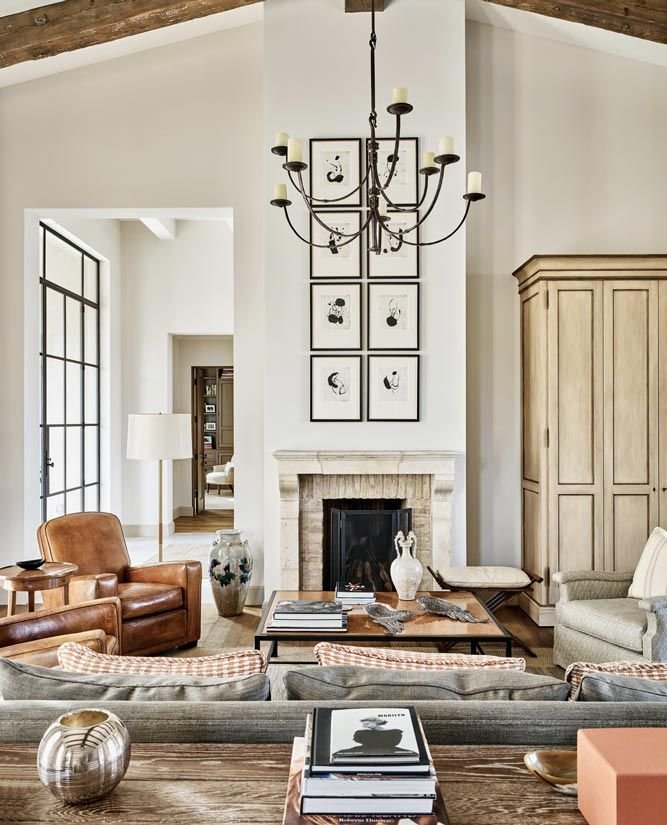


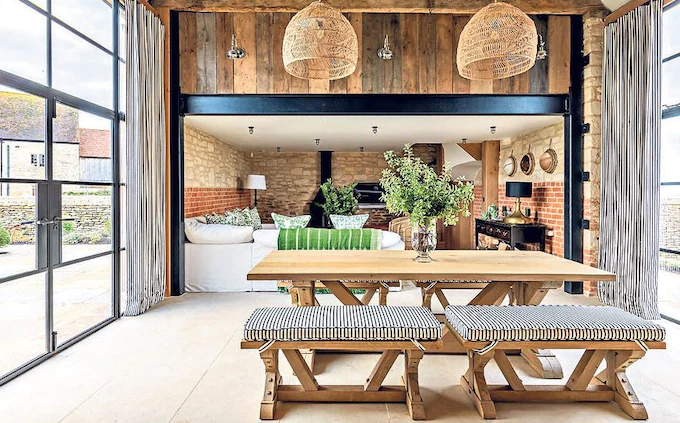




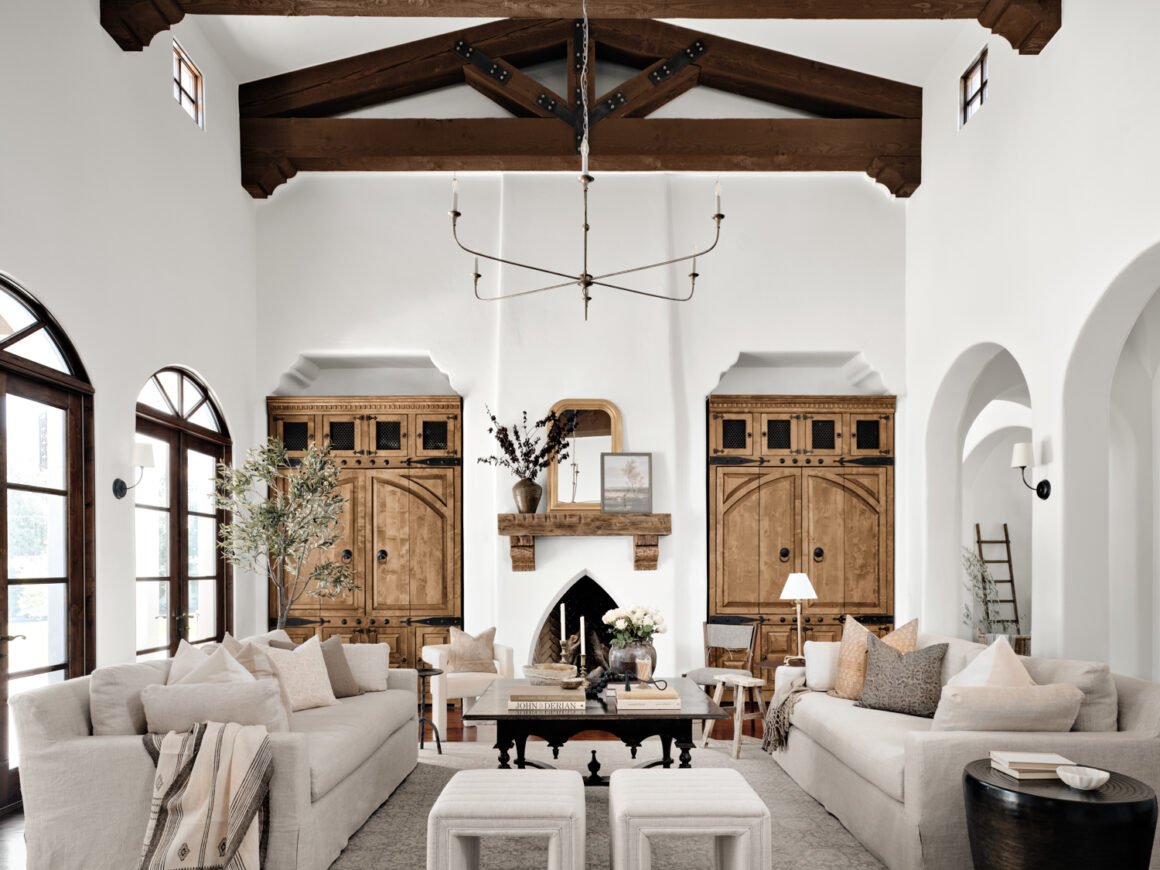
Note: Country styles, such as English, Provençal, or American, often draw from historical influences, evoking a timeless charm that may not always align with modern needs and aesthetics. However, there’s no need to shy away from experimentation. Embracing a modern interpretation of rustic authenticity is a sure path to creating a beautiful, cozy, and comfortable home that harmoniously blends tradition with the demands of contemporary living.




